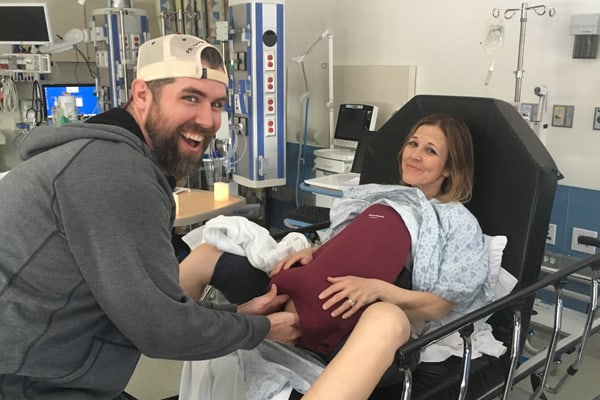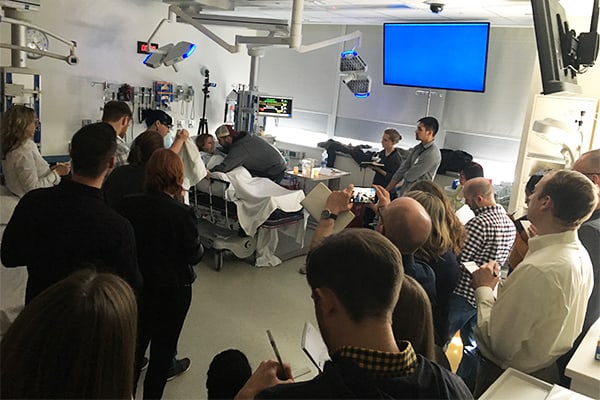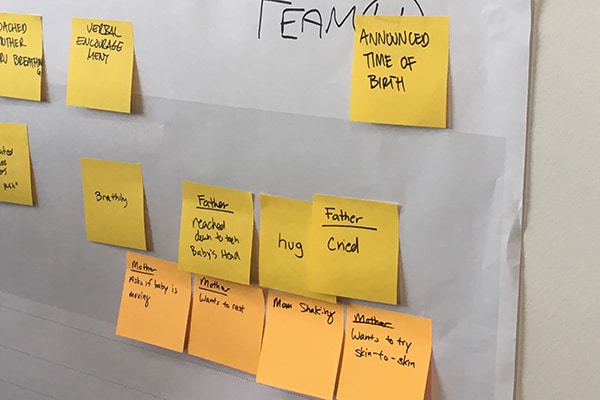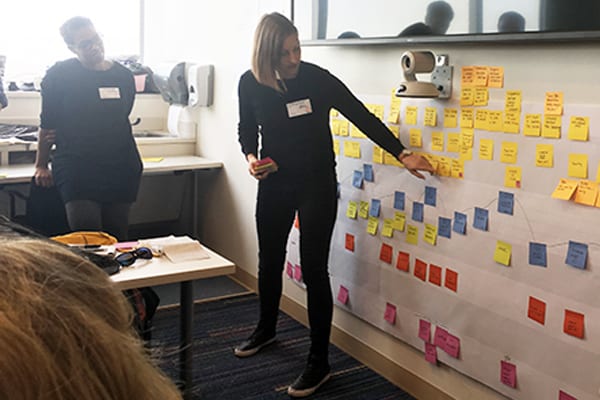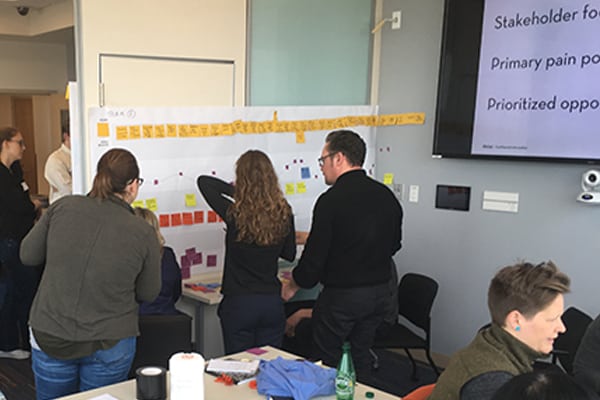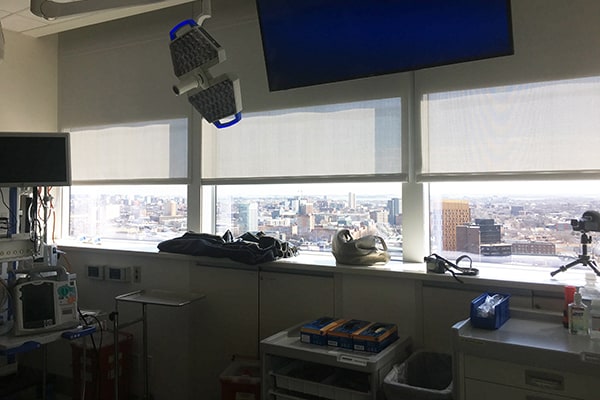Recapping the #IDSAMedical Pre-Conference Workshop: Unlocking New Value through Healthcare Experience Mapping
On Wednesday, March 28, 2018, THRIVE UX Designer Bradley Bergeron proudly welcomed a child to the world. Okay so not a real child; the child was plastic. But the rest of it — the hospital room, the medical equipment, the enacted stages of labor and the process of delivery — was as close to real as you can get thanks to Boston Children’s Hospital and its simulator program (also thanks to our wonderful actors, Jenn Leonard, Carrie Good, and of course, Brad). It was all a part of our (sold out!) pre-conference workshop for the IDSA Medical Design Conference 2018: “Unlocking New Value through Healthcare Experience Mapping.”
Getting into character!
About 30 attendees joined us to learn tools and techniques for conducting a contextual inquiry, patient journey mapping, and opportunity identification through the simulated birth. They got to experience firsthand what it’s like to take observations in a medical context and use that information to analyze a patient experience, with a goal of uncovering pain points or gaps in the experience (FYI: we purposely built some pain points into the simulation to spice things up) — discoveries that then become the basis for opportunities to better the patient journey. It ended up being a learning process for everyone involved: While we’ve done many workshops at Thrive, this was our first one involving a simulation of the clinical environment. Fortunately, everything went off without a hitch, and we’ve got the pictures to prove it.
During the simulation, attendees recorded what was happening linearly — noting when things were and weren’t going well. They were split into groups prior to the simulation, and we advised them to divide observation responsibilities among the team so at least one member had an explicit focus on the father, the mother and the nurse.
After the simulation, the teams came back together and shared notes, then started to map the timeline of the experience, using Post-it notes to arrange each action that occurred.
Then they looked at the feelings of the stakeholders and aligned those emotions with the actions that occurred throughout the experience. It was wonderful to see how engaged they were in the overall mapping process and how much thought and effort they put into notating everything they saw.
After analyzing their maps, some discoveries and insights came to light, and particular opportunities were identified. They picked up on the pain points, noting issues like a lack of communication regarding the status of the mother — she and the father had to continually ask a healthcare professional what was going on — and presenting possible solutions. We wondered, “What if there was a tablet by the patient bed that presented information in a consumable way for the mother and partner (rather than just heart monitors the parents don’t know how to read)?”
It was interesting to see how each group approached the mapping technique; while everyone had similar content to work from, the way they thought through that content and mapped emotions was slightly different. The best part, however, was seeing that the process really clicked for the participants; that the translation between the simulation and the ultimate output from it was really seamless. We were thrilled that they were able to uncover some great insights!
Til’ next time Boston!
